Motif Development through the Ages
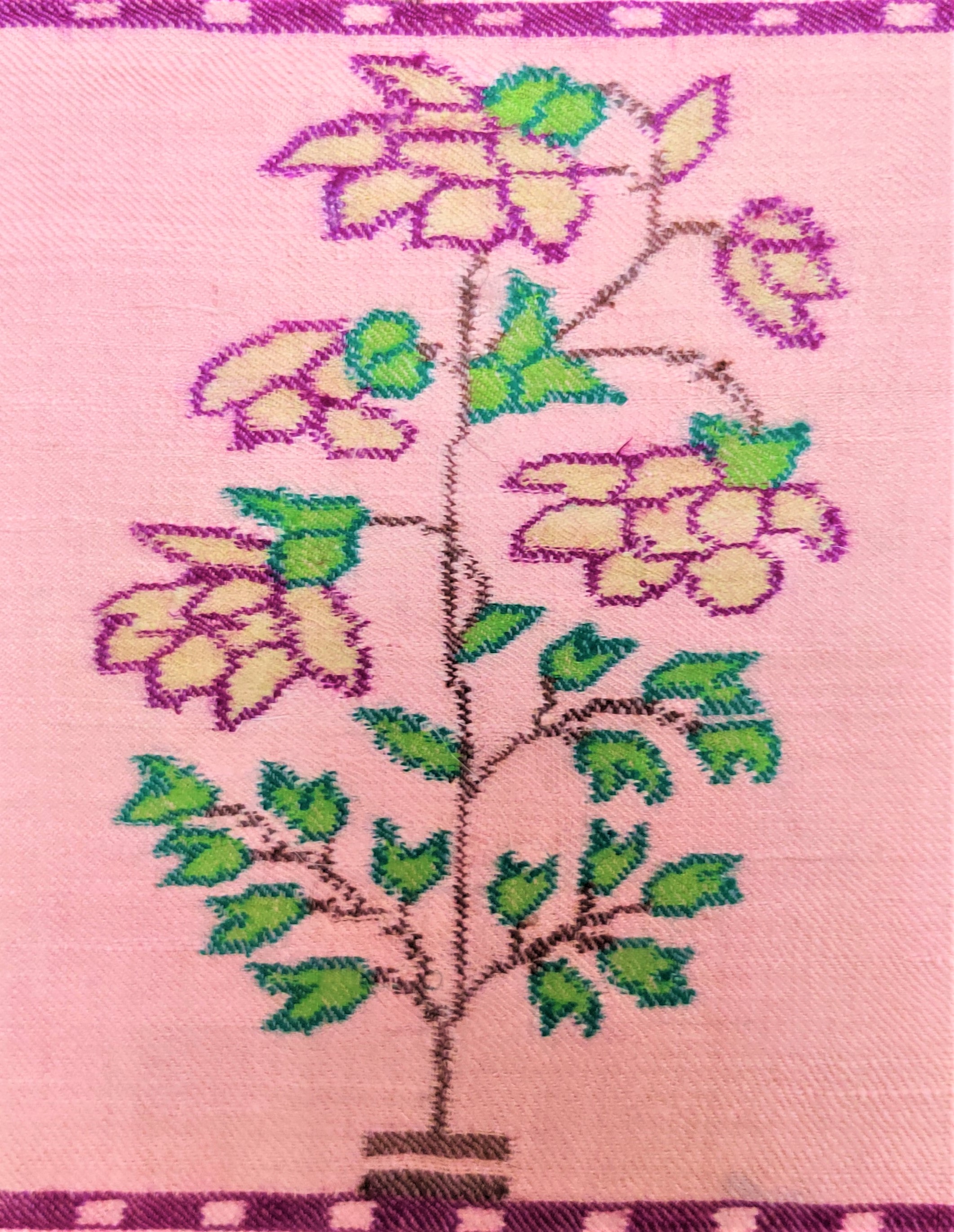
Early Mughal
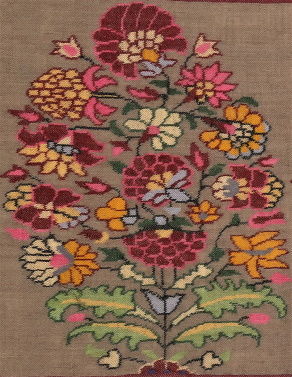
Mughal mid 17th Century
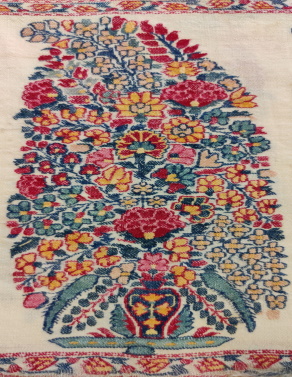
Mughal late 17th Century
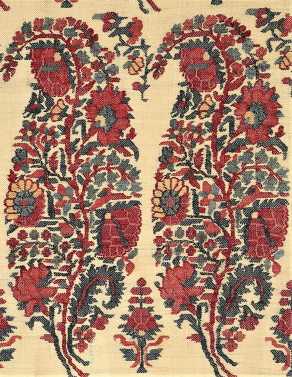
Afghan early 18th Century
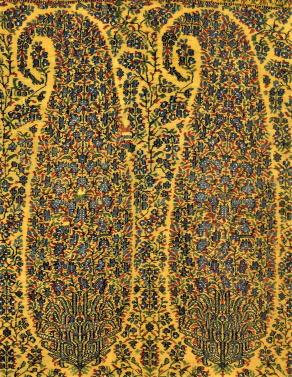
Afghan late 18th Century
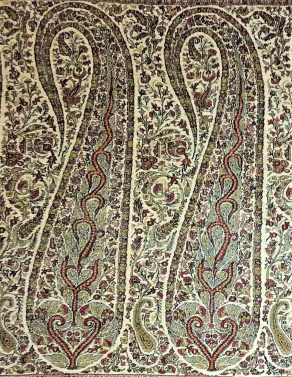
Sikh Early 19th Century
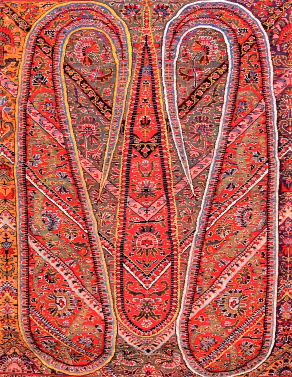
Sikh c.1830
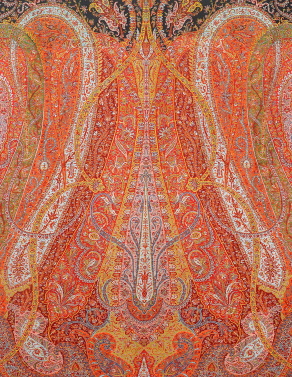
Dogra 1850s
As we move from the Mughal to Dogra rule in Kashmir, the main motif evolves from a simple natural flower or plant with limited colours to a complex, stylized and multi-coloured one, known the world over as the Paisley, boteh or buta, mango or kairi motif. By the 1760s, the flower becomes a bouquet or floral arrangement and starts tilting in one direction to take the boteh shape with a curving tip by 1800. Then by 1825, the tip uncurls and starts to point downwards like a dagger. With increased Western influence on design, by 1860s, only two large scroll-like botehs remain and design covers the entire shawl. The ever-popular Mughal floral motifs are preserved in murals, miniatures and in stone in the North Indian palaces, especially in Agra, Rajasthan cities and Delhi. Till date they are woven in shawls, textiles, furnishing and accessories, printed on fabric, porcelain and paper. This is evidence of their undying aesthetic appeal and market value!
